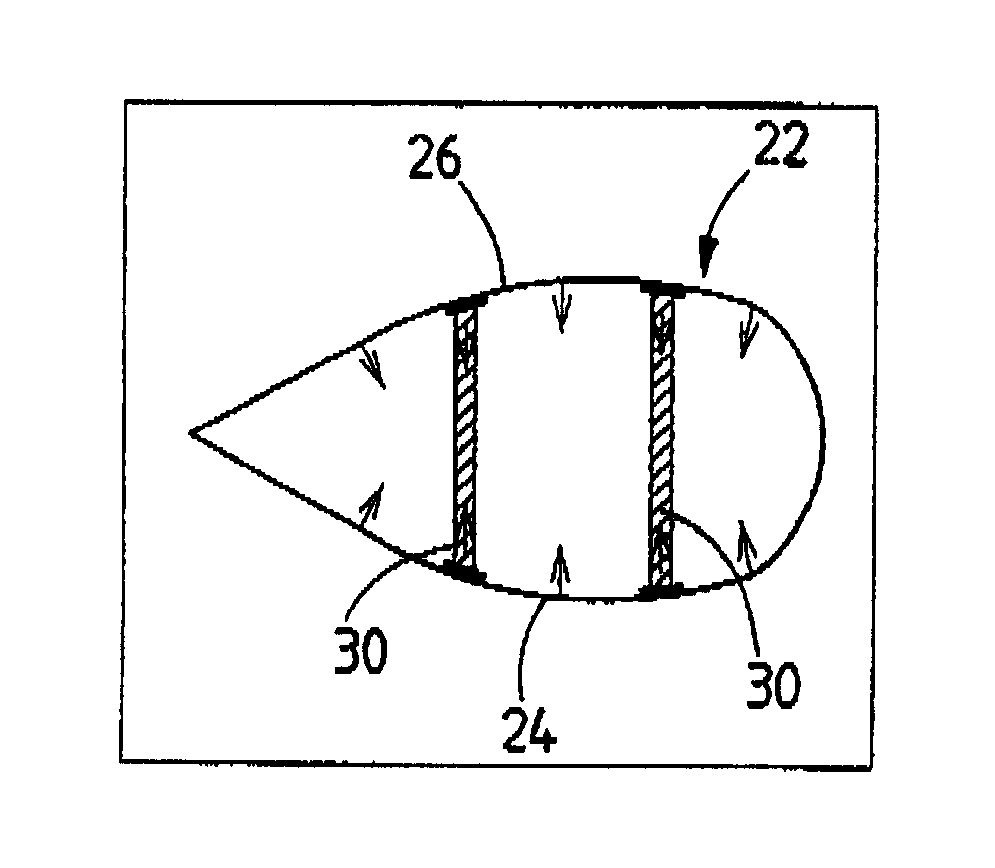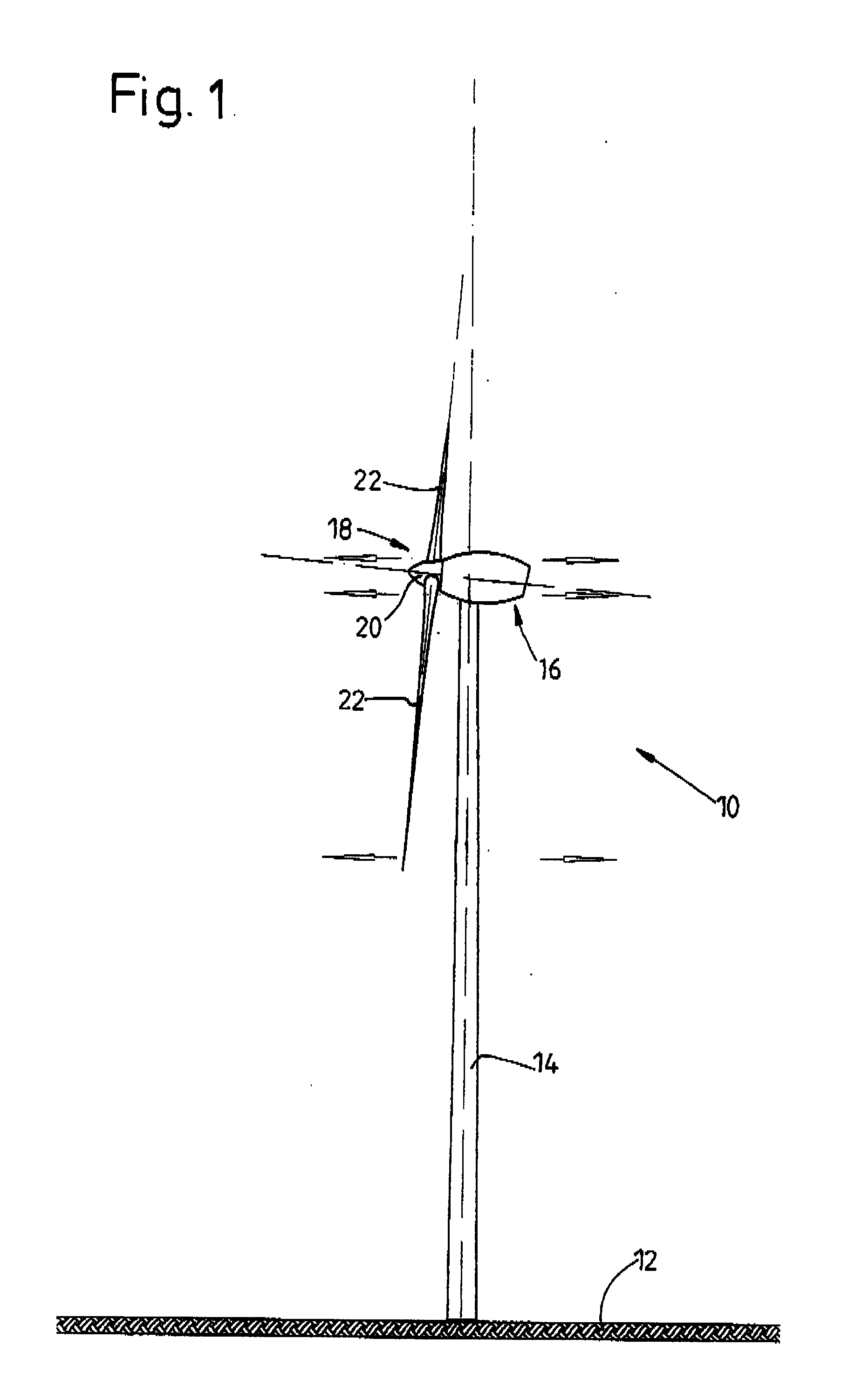Rotor blade for a wind energy installation
- Summary
- Abstract
- Description
- Claims
- Application Information
AI Technical Summary
Benefits of technology
Problems solved by technology
Method used
Image
Examples
Embodiment Construction
[0026]FIG. 1 illustrates a wind energy installation 10 which has a pod 16, which is arranged at the top of the tower, at the upper end of a vertical tower 14 which is arranged on a horizontal foundation 12. As those skilled in the art in this field know, a wide range of embodiments are feasible for the detailed design of a tower for a wind energy installation. The invention is, of course, not restricted to the truncated-conical form of the tower 14 described in the drawing.
[0027] A rotor 18 is arranged at an end of the pod 16 facing the wind, and has a hub 20. Three rotor blades 22 are connected to the hub 20, with the rotor blade roots of the rotor blades 22 being inserted into corresponding openings in the hub 20, and being connected to it in a known manner.
[0028] The rotor 18 rotates about an axis which is inclined slightly upwards with respect to the horizontal. As soon as wind strikes the rotor blades 22, the rotor 18 together with the rotor blades 22 is caused to rotate abou...
PUM
 Login to View More
Login to View More Abstract
Description
Claims
Application Information
 Login to View More
Login to View More - R&D
- Intellectual Property
- Life Sciences
- Materials
- Tech Scout
- Unparalleled Data Quality
- Higher Quality Content
- 60% Fewer Hallucinations
Browse by: Latest US Patents, China's latest patents, Technical Efficacy Thesaurus, Application Domain, Technology Topic, Popular Technical Reports.
© 2025 PatSnap. All rights reserved.Legal|Privacy policy|Modern Slavery Act Transparency Statement|Sitemap|About US| Contact US: help@patsnap.com



